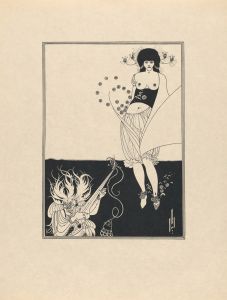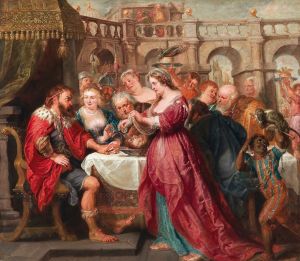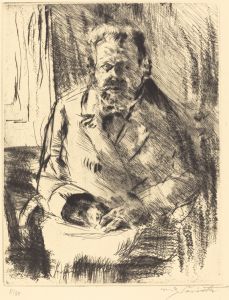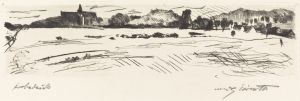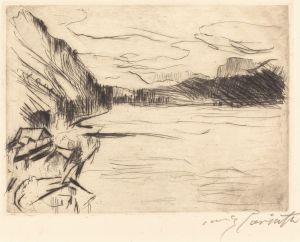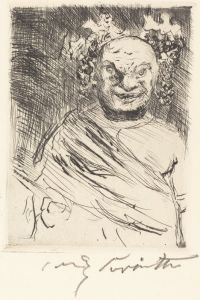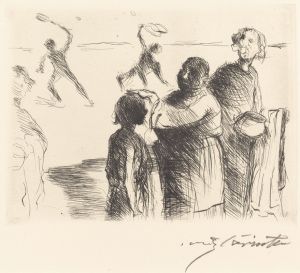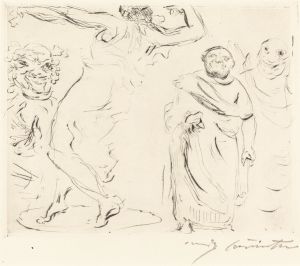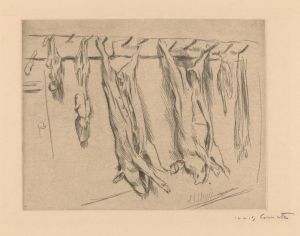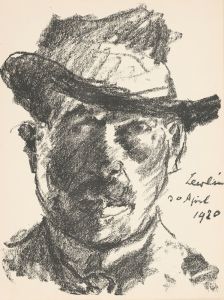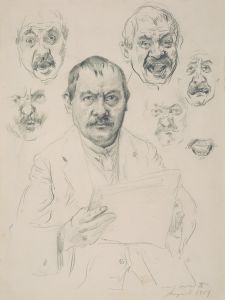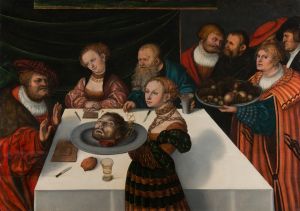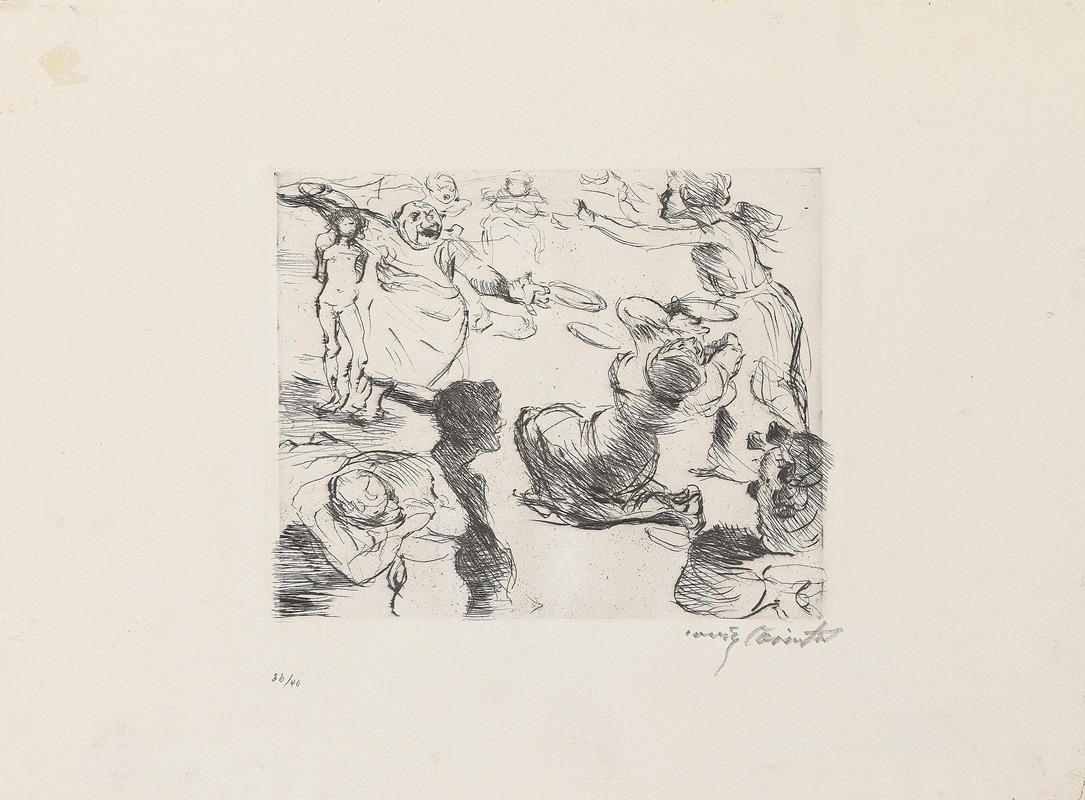
Gastmahl des Trimalchio 10
A hand-painted replica of Lovis Corinth’s masterpiece Gastmahl des Trimalchio 10, meticulously crafted by professional artists to capture the true essence of the original. Each piece is created with museum-quality canvas and rare mineral pigments, carefully painted by experienced artists with delicate brushstrokes and rich, layered colors to perfectly recreate the texture of the original artwork. Unlike machine-printed reproductions, this hand-painted version brings the painting to life, infused with the artist’s emotions and skill in every stroke. Whether for personal collection or home decoration, it instantly elevates the artistic atmosphere of any space.
Lovis Corinth was a prominent German painter and printmaker, known for his significant contributions to the German Impressionist and Expressionist movements. One of his notable works is "Gastmahl des Trimalchio 10," which is part of a series of artworks inspired by the ancient Roman text "Satyricon" by Petronius. This text is a satirical novel that provides a vivid depiction of Roman society, and one of its most famous sections is the "Cena Trimalchionis" or "The Banquet of Trimalchio."
Corinth's "Gastmahl des Trimalchio 10" is one of several pieces he created that explore the themes and characters of this Roman banquet. The painting captures the opulence and excess of Trimalchio's feast, a central theme in Petronius's work. Trimalchio is a wealthy freedman who hosts an extravagant dinner party, showcasing his wealth and social status. Corinth's interpretation of this scene reflects his interest in the human condition, societal norms, and the decadence of the time.
Lovis Corinth was known for his dynamic brushwork and vibrant use of color, which are evident in "Gastmahl des Trimalchio 10." His style often combined elements of realism with more expressive techniques, allowing him to convey both the physicality and the emotional intensity of his subjects. In this painting, Corinth likely used these techniques to emphasize the lavishness and the underlying absurdity of Trimalchio's banquet.
The "Gastmahl des Trimalchio" series was created during a period when Corinth was deeply engaged with classical themes and narratives, a common interest among artists of his time. This engagement was part of a broader cultural movement that sought to reinterpret ancient stories through a modern lens, often highlighting timeless human behaviors and societal critiques.
Corinth's work, including "Gastmahl des Trimalchio 10," is significant not only for its artistic qualities but also for its commentary on the social dynamics of both ancient Rome and Corinth's contemporary society. By drawing parallels between the two, Corinth invites viewers to reflect on the nature of wealth, power, and human folly.
Throughout his career, Lovis Corinth faced various personal and professional challenges, including a stroke in 1911 that affected his ability to paint. Despite this, he continued to produce art with remarkable vigor and adaptability, further cementing his legacy in the art world. His later works, including those in the "Gastmahl des Trimalchio" series, often exhibit a more introspective and mature style, reflecting his personal experiences and evolving artistic vision.
Today, Lovis Corinth is celebrated as one of the leading figures of German art in the late 19th and early 20th centuries. His works, including "Gastmahl des Trimalchio 10," are held in high regard and can be found in major art collections and museums worldwide, where they continue to be studied and appreciated for their historical and artistic significance.





